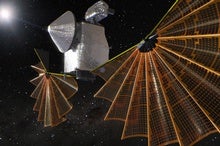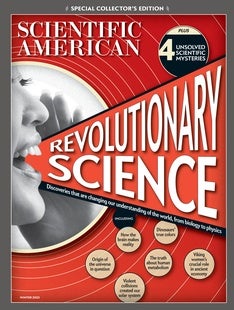 |
| March 09, 2023 |
| |
| | Lee Billings, Senior Editor, Space & Physics
| |
 |
| Planetary Science Mystery of Ancient Space Superstorms Deepens A fresh analysis of tree-ring data suggests barrages of cosmic radiation that washed over Earth centuries ago may have come from sources besides our sun By Katherine Kornei | |
| |
| |
| |
| Astronomy Are Telescopes on the Moon Doomed? Booming exploration and commercial activity could ruin the quiet, astronomy-friendly environment of the lunar far side | | By Davide Castelvecchi,Nature magazine | | | |
| |
| |
| |
| |
| |
FROM THE ARCHIVE
 | | | |
LATEST ISSUES
 |
| |
| Questions? Comments?  | |
| Download the Scientific American App |
| |
| |




















